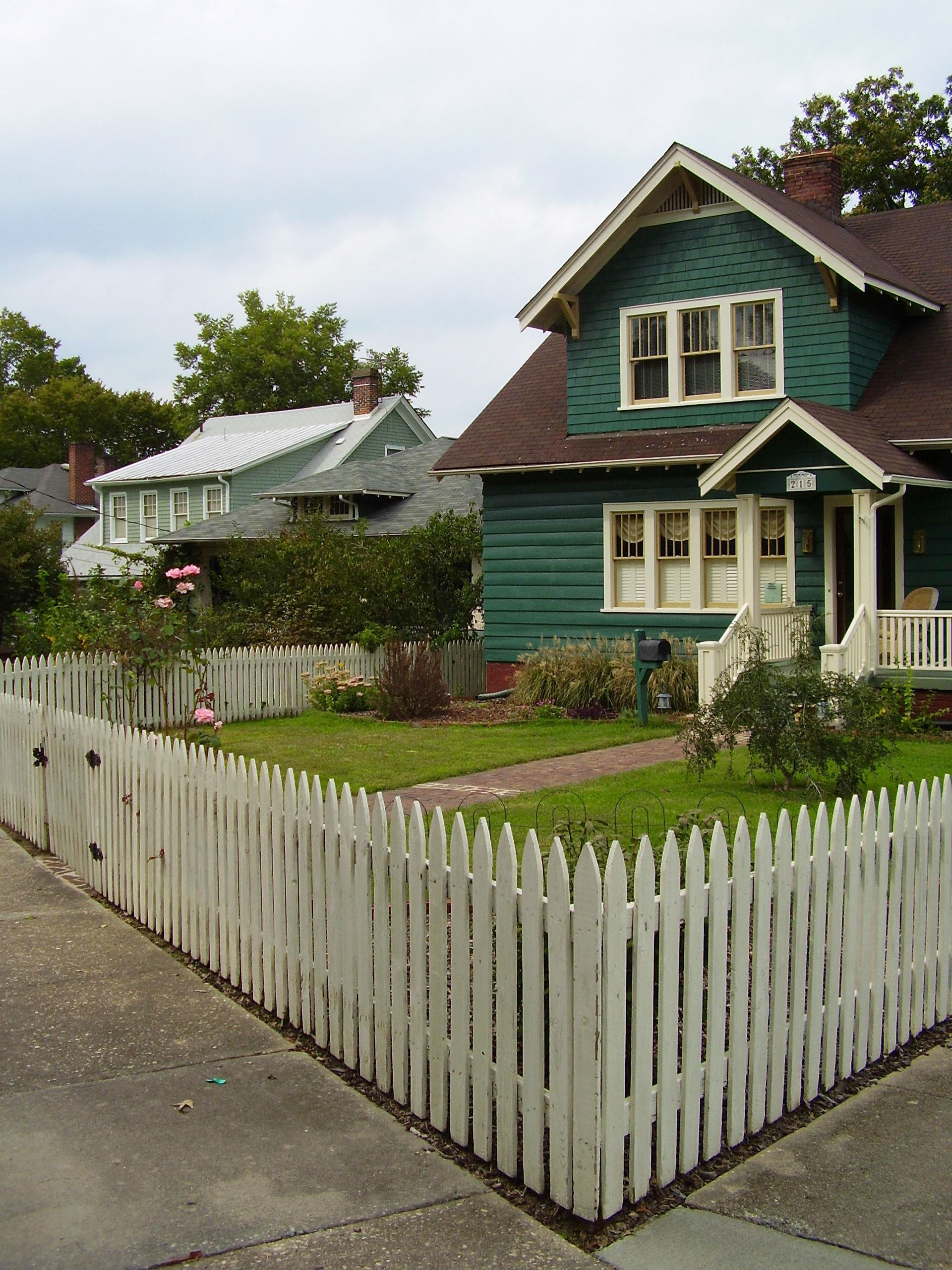Growing both historic congregations with diverse community programs, and healthy historic districts that foster property investment, is high on every preservation organization’s wish list. However, within the context of established historic districts, conflicts can arise when the expansion of a congregation’s facilities is done at the expense of historic properties.
Such is the case in Fisher Park, just outside Greensboro, NC. This neighborhood of approximately 250 houses has long been considered one of the state’s premier streetcar suburbs, featuring a variety of architectural styles united by a woodland park.
The century-old homes are rivaled only by the neighborhood’s historic sanctuaries, which include three designed by celebrated New York City architect Hobart Upjohn: Holy Trinity Episcopal Church, the oldest of the three; Temple Emanuel, dedicated by Greensboro’s influential Jewish community in 1925; and First Presbyterian Church, finished in 1929 and arguably Upjohn’s grandest work.
Both the neighborhood and its sacred places have made positive contributions to Greensboro’s historic preservation movement. All three congregations have kept their sanctuaries in excellent states of preservation throughout their 80 years in the neighborhood. Simultaneously, Greensboro’s Historic Preservation Commission has worked tirelessly for 30 years to stabilize and cultivate reinvestment in the historic centercity neighborhoods by developing a system of design standards and discouraging destruction of properties.
From time to time, congregations have sought to expand parking or clear their property for future building projects. On the other hand, residents and homeowners seek to enhance home values by encouraging private investment in residential properties. Persuasive arguments and passionate feelings for both sides of the demolition-for-church-expansion issue have polarized residents into pro-neighborhood or pro-congregation camps.
In order to address increasing division in the neighborhood, the city-wide nonprofit organization Preservation Greensboro teamed with Partners for Sacred Places, the National Trust for Historic Preservation, and the Greensboro-based Covington Foundation to hold a community design workshop to explore the future of Fisher Park through thoughtful and positive dialogue.
At the heart of the discussion is how this historic neighborhood might grow and flourish as one of North Carolina’s most cosmopolitan locales without sacrificing its culture or its institutions. The city blocks that constitute the study area are home not only to major religious congregations, but also to a network of city- and state-wide nonprofits, county government buildings, the city’s oldest public park, a sprawling Victorian-era cemetery, and a soon-to-be-constructed downtown greenway. How can these varied institutions grow and thrive in a way that benefits all?
Held in November 2009 at Holy Trinity, the free event was open to the public and included a workshop facilitated by Luther K. Snow, the nationally recognized author of The Power of Asset Mapping. Participants focused on the strengths and assets of the Fisher Park neighborhood while Snow guided them through exercises that resulted in creative project ideas that prompted action.
Over the course of the workshop, attended by approximately seventy stakeholders, several initiatives were identified, including cultivating special events to spur synergy and social interaction between residents and congregation members; promoting the neighborhood as a “sacred zone” of cultural and spiritual institutions; and recognizing that collaborative development opportunities were possible on under-utilized land.
Residents continue to hold meetings to prioritize opportunities and initiatives identified in the workshop. For the first time in recent memory, residents see their neighborhood’s sacred spaces as assets that help brand their community as a unique place in Greensboro. Similarly, congregations are beginning to see themselves as partners within the fabric of the Fisher Park community, and are seeking opportunities to participate in local events. Perhaps the tide has turned in a way that historic Fisher Park can thrive – more than ever – as a dynamic, renewed neighborhood!

